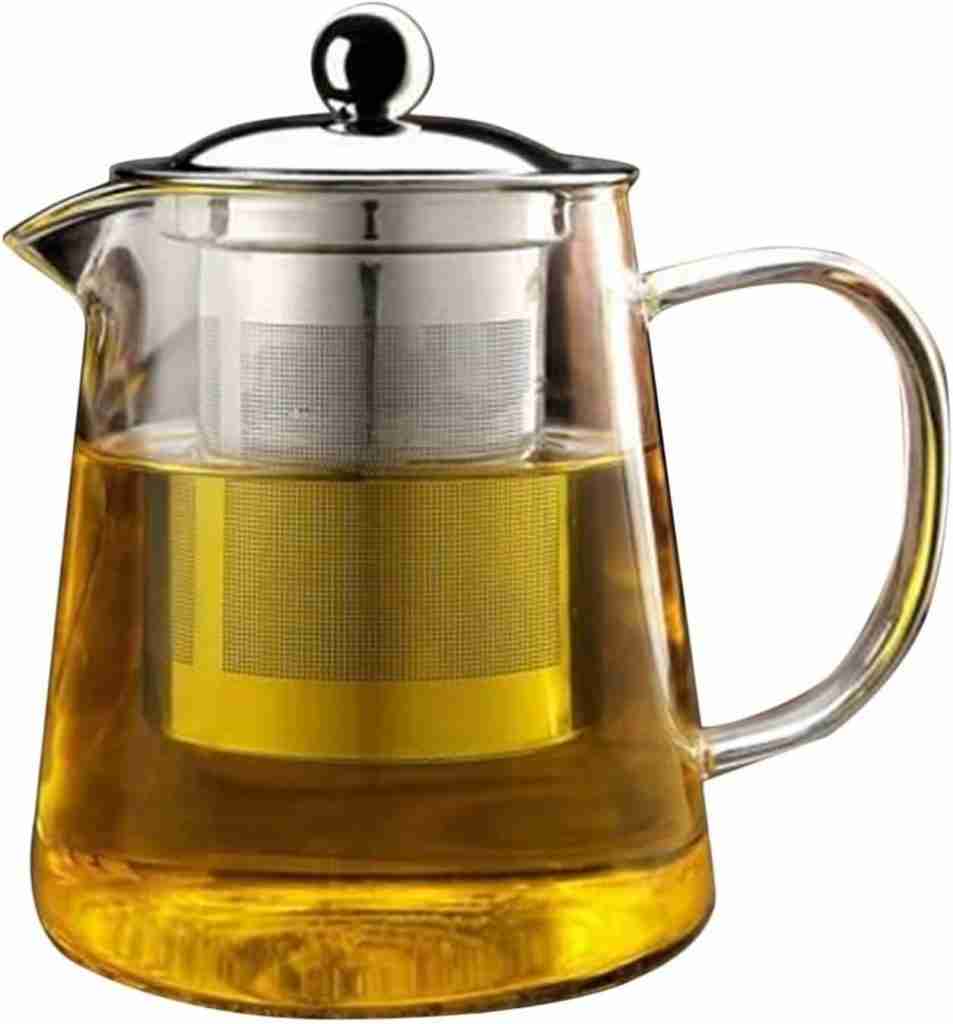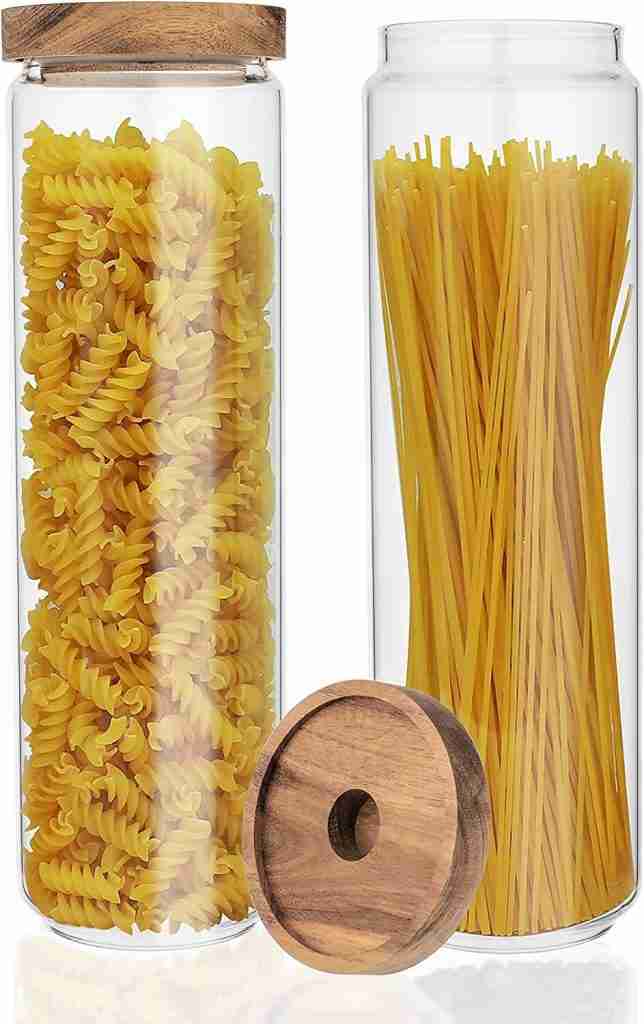In today’s post, we are going to talk about borosilicate vs regular glass. Borosilicate glass is a kind of glass that is heat-resistant, long-lasting, non-toxic, lead- and BPA-free, dishwasher safe, microwave safe, freezer safe, and oven safe.
Another intriguing quality of borosilicate glass is its resistance to breaking during extreme temperature changes due to the ingredients used in its production.
We won’t limit our discussion to borosilicate glass in this article. We’ll discuss the differences between borosilicate and ordinary glass. What distinguishes borosilicate glass from normal glass? Compared to borosilicate, is normal glass more durable?
Continue reading if you want to find out the answer.
BOROSILICATE PROPERTIES
What qualities are used to create borosilicate glass? The following are the properties of borosilicate:
- Compared to other kinds of glass, it is more resistant to temperature changes because it has a lower coefficient of thermal expansion.
- Borosilicate glass is an incredibly strong material. Comparatively speaking to other glass varieties, it is more resistant to blunt force impact. Up to 300 °C can be applied without it melting.
- The shear modulus and Knoop hardness of borosilicate are 26.5–27 GPA and 400–480, respectively, at 20 degrees Celsius.
- It can withstand corrosion and breaking when exposed to an acidic environment.
- The composition of borosilicate glass is 4 percent sodium oxide, 2-3 percent aluminum oxide, 13% boric oxide, and 80% silica.
BOROSILICATE VS REGULAR GLASS
Regular glass and borosilicate are not the same. They may have some similarities but still differ greatly from one another in that they are produced using various methods and materials, which makes them highly diverse from one another. Here are the differences between borosilicate and regular glass: borosilicate vs regular glass.
Regular glass and borosilicate are both harmless and do not contaminate food or beverages with harmful chemicals. Additionally, they are nonporous and do not absorb flavors or scents.
Compared to regular glass, borosilicate glass is more dishwasher safe due to its increased strength and thickness.
Boric oxide, silica sand, alumina, and soda ash are the main components of borosilicate while regular glass is formed from sand, soda ash, and limestone.
Both borosilicate and regular glass are microwave, and oven safe unless the manufacturer specifies differently.
As long as it says “oven-safe” on it, regular glass and borosilicate can be used in the oven and freezer.
IS BOROSILICATE GLASS BREAKABLE?
While borosilicate glass is more resistant to thermal shock than other types of glass, it can still shatter under conditions of excessive or sudden temperature change, which will cause it to expand. It can tolerate temperatures of around 330 Fahrenheit and 180 Celsius, although it is less resistant to mechanical forces, such as being dropped with a heavy object.

Instead of shattering into tiny bits when it breaks, it usually cracks into lumps. Additionally, compared to ordinary glass that fractures when cooled quickly, this glass is designed to handle heat better and is considerably less likely to break.
READ ALSO: IS BOROSILICATE GLASS SAFE TO DRINK FROM?
READ ALSO: DOES BOROSILICATE GLASS CONTAIN LEAD?
USES OF BOROSILICATE GLASS
What applications are there for borosilicate glass? Borosilicate glass is used for a number of purposes by different manufacturers because it is secure, non-toxic, resistant to heat shock, incredibly strong, and shatterproof. Borosilicate glass can be used for the following purposes:
- Cooking and baking utensils like pots and pans.
- Laboratory glassware.
- Magnificent lenses.
- Thermal defense.
- The insertion of medical devices, such as artificial hip joints.
- The aircraft’s outdoor optics.
- Jugs and bottles of water
IS BOROSILICATE GLASS HEAT RESISTANT?
Absolutely, borosilicate glass can withstand both heat and cold. This glass can withstand temperatures as high as 752 degrees Fahrenheit for brief periods of time during typical use, and it may be heated to 392 to 446 degrees Fahrenheit.
They are resistant to thermal shock due to their extremely low coefficient of thermal expansion, which also makes them heat resistant.
This suggests that the glass is not under as much stress when the temperature changes. An oven-baked borosilicate dish can be taken out and set on a cool counter without breaking.
IS BOROSILICATE GLASS SAFE?
Yes! Because it is free of lead and BPA, resists chemical and acid deterioration, and is entirely inert, nontoxic, and nonporous, borosilicate glass is exceptionally safe.
Borosilicate glass is created at temperatures that are exceedingly high. This contributes to the heat resistance and extreme durability of borosilicate together with its composition. The borosilicate glasses below are exquisitely made and safe.
BOROSILICATE GLASS FOOD JARS

The food-grade glass used to create these borosilicate food glass jars is lead-free. To keep food fresh and protected from dust, the lid’s silicon ring forms a seal and is moisture-proof.
They’re great for storing leftovers, excellent for the environment, and make ingredient sorting simple.
Additionally, rice flour, sugar, snacks, coffee beans, pasta grains, and many other items are ideal for storage in it. It is resilient to breakage, strong, long-lasting, and temperature-tolerant.
Additionally, to being hand washable, they are dishwasher safe.
HEAT-RESISTANT IRIDESCENT STEMLESS WINE GLASS

These lovely tumbler glasses are created from borosilicate glass, which can withstand heat. They are obvious, very strong, and BPA-free.
They are adaptable, great for daily usage, great as Christmas gifts for the office, and great for your closest friend or a coworker on New Year’s Eve.
These stylish drinking glasses are ideal for cocktails, white wine, red wine, and whiskey as well as for use at home and at work.
BOROSILICATE GLASS WATER BOTTLE WITH TIME MARKER

This BPA-free borosilicate glass water bottle has a wide aperture that makes it simple to add fruit and ice cubes.
It has a handle, a straw, and a non-slip protective silicone cover that makes it easy to hold and transport.
It offers a clean drinking experience, is sustainable, uplifting, simple to clean, and leakproof.
BOROSILICATE GLASS VS TEMPERED GLASS
The distinctions between tempered glass and borosilicate glass are listed below- borosilicate glass vs tempered glass:
In contrast to tempered glass, also known as toughened glass, which is a strengthened material used when conventional annealed glass is insufficiently robust, borosilicate glass is a type of glass that contains boron trioxide, a substance with a low coefficient of thermal expansion.
Borosilicate glass and tempered glass can both be used in the dishwasher, oven, freezer, and microwave.
Tempered glass is robust and long-lasting by nature. It is far more impact resistant than normal glass. Additionally, it is scratch-resistant.
Additionally strong and break-resistant, borosilicate glass is a great choice. It has a longer lifespan and is less vulnerable to surface deterioration from nicks and scratches.
Heat does not damage tempered glass. It is unaffected by temperatures as high as 300 °C. Although it can endure thermal shock, borosilicate glass is more resistant.
The ability of borosilicate glass to absorb thermal shock allows it to withstand sudden fluctuations in temperature.
While glass with a high borosilicate percentage is thinner and lighter, tempered glass is thicker than ordinary glass.
BOROSILICATE GLASS VS SODA-LIME
Below is a comparison of borosilicate glass and soda-lime- borosilicate glass vs soda-lime:
The most prevalent and affordable variety of glass is soda–lime. Compared to soda-lime, borosilicate is significantly more expensive.
When compared to borosilicate glass, which also contains 13-15% boron trioxide, 2-3% aluminum oxide, 4% sodium oxide, and 80% silica, soda-lime comprises 70% silica along with tiny amounts of other ingredients.
Glass made of borosilicate is more resistant to thermal shock than glass made of soda-lime.
In comparison to soda-lime glass, borosilicate glass is more durable in the dishwasher, microwave, oven, and freezer.
In comparison to soda-lime glass, borosilicate is stronger, tougher, and more resilient.
Glass made of borosilicate is more resistant to acids than soda lime.
Borosilicate is less dangerous than soda-lime since it breaks into chunks when it does. Sharp or jagged shards are produced when soda-lime splits.
Borosilicate glass can survive temperatures of up to 446°F when used normally, but soda-lime can withstand both a quick temperature shock of 40°F and up to 230°F when heated.
BOROSILICATE GLASS VS PYREX
Before Corning Glass Works switched to soda-lime glass, Pyrex was made using borosilicate glass from 1915 to 1980. The switch was done due to production costs rather than borosilicate’s dangers and potential for leaching dangerous compounds. Detailed here are the differences between borosilicate and pyrex- borosilicate glass vs pyrex:
Borosilicate glass is created by combining boron trioxide with silica.
In the past, borosilicate glass was used to make Pyrex; today, soda-lime glass is utilized instead.
Compared to borosilicate glass, soda-lime is less expensive.
Chemical, electrical, and thermal resistance are all features of Pyrex glass.
Borosilicate glass is recognized for having a low coefficient of thermal expansion. Because of this, it can tolerate thermal shock.
Pyrex and borosilicate are both very safe to use and harmless.
The oven, microwave, dishwasher, and freezer accept both Pyrex and borosilicate containers.
IS BOROSILICATE GLASS STRONGER THAN REGULAR GLASS?
Yes, borosilicate glass is stronger than normal glass due to its tougher texture and capacity to take on more intricate shapes. It is frequently used in chemistry labs because it resists acid erosion.
DOES BOROSILICATE GLASS BREAK EASILY?
Glass made of borosilicate is tough, resistant to thermal shock, and does not crack when subjected to sharp temperature variations.
Borosilicate glass can break or crack when exposed to unexpected temperature changes or if not handled correctly, despite being more resistant to thermal stress than other glassware.
WHAT IS THE ADVANTAGE OF BOROSILICATE GLASS?
Glass with a high proportion of boron trioxide and silica is called borosilicate glass. This indicates that, unlike conventional glass, it won’t break when the temperature drastically changes.
It is a preferred glass for restaurants, labs, and wineries due to its durability.
Due to its high melting point, which makes it more heat resistant than many common glass kinds, it is absolutely non-toxic.
Additionally, because borosilicate doesn’t strain out, food and beverages served in borosilicate containers are typically excellent.
CAN BOROSILICATE GLASS BE HEATED ON THE STOVE?
It has thermal qualities, thus yes, it can be heated. It is extremely shock-resistant and capable of holding both hot and cold content. Nevertheless, not in extremely hot or cold temperatures.
IS BOROSILICATE GLASS HEALTHY TO USE?
Because it is totally non-toxic, lead-free, and BPA-free, borosilicate glass is healthy to use.